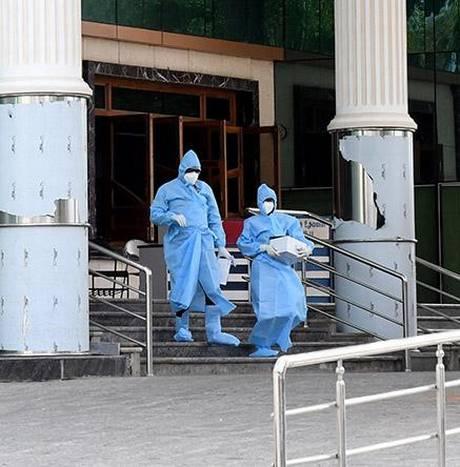The recent pandemic outbreak has resulted in a sudden upsurge of the need for Personal Protective Equipment (PPE). PPE is a line of special protective gears that serve as a barrier between the wearer and the infectious agents. Using PPE reduces the instances of direct contact, exposure to harmful agents and keeps a check on the spread of infection. While PPE was chiefly being used in various healthcare settings, such as clinical labs, hospitals and physician offices, the current pandemic outbreak has extended its usage drastically.
Apart from the doctors, physicians, hospital staff and cleaning and sanitary personnel, several frontline workers such as the police officers and other social workers should also begin using PPE. Other doctors including the dentists, skin specialists, orthopedics and general physicians also require PPE to safeguard themselves while they treat the patients.
Choose the Right PPE
Currently, using PPE has become mandatory. However, it is equally important to use the right PPE based on the profession and the working environment to prevent infection from spreading. Mostly, workplaces define what type of PPE should be used. However, some workplaces might not have a defined PPE requirement. In such cases the right kind of PPE requirements can be set up.
Rational Use of PPE
When it comes to infection control, the PPE requirements differ from one setting to another. Some of the most common setting where the healthcare staff work and the respective PPE requirements:
- Points of Entries (POEs) - Being relatively low risk, triple layer medical mask and gloves can be used
- Quarantine centers - Moderate to low risk and requires the usage of masks and gloves
- Hospitals and laboratories - High risk environment and requires the usage of complete PPE kit
- Primary health care/community settings - Low risk and requires the usage of N95 masks and gloves
PPE for Other Frontline Workers
The impact of this pandemic and the risk associated is very real for our police force. This sector of the frontline workers have been severely affected by the pandemic outbreak. Some of the major risks faced by the police force include:
- Long working hours on the frontlines
- Supply of minimal protective gear
- Serving in the worst affected areas
- Deplorable living conditions
With the increase in the number of positive cases day by day, there seems to be no respite for the police force any time soon. With the constant extension of lockdown, coupled with a calibrated easing on restrictions, it can get highly stressful and can make police personnel on the ground highly vulnerable to the infection.
Apart from serving in the war against the current pandemic, police stations have also been certain additional tasks of checking on the migrants’ movements and assisting the quarantine facilities. Furthermore, the police stations should also coordinate on the migrants’ movements to implement appropriate lockdown orders. All these factors increase the risk of infection, if there is no proper supply of essential personal protective gears.
Contractual Healthcare Workers
Next comes another important segment of the workers who are actively serving in this pandemic, known as the contractual workers. This sector is a mix of different staff who carry out trivial yet high-risk tasks such as disposing the used PPE, community workers, cleaning and sanitation, etc. These health workers are also fatigued, but are unfortunately left to fend for themselves. Some of the risks they face include:
- Compromised institutional and community setting
- Lower wages
- Poor PPE
- Job insecurity
- Poor protective measures
- Increased vulnerability to infection
These lower rungs in the work hierarchy are contractual and hence do not receive any benefits, which are otherwise offered to regular employees.
Preventive Measures to Safeguard Our Frontline Staff
The main problem that is increasing the risk of infection among these lower rungs in society is the lack of preparedness. Timely educating the lower ranks of our task force and sufficiently educating them about the preventive measures to be taken when interacting with the public is important and should be reinforced on a daily basis.
Practicing the following safety measures can reduce the risk of infection:
- Sanitising the police stations and other such premises twice a day
- Offering better facilities and accommodation
- Setting up isolation wards
- Providing ventilators and other supportive equipment
- Supplying adequate PPE
- Strengthening public health systems
Conclusion
As we stand at the point of relaxing the lockdown, resuming our economic activities and moving ahead while dealing with the pandemic, it is important for us to address the concerns of the frontline workers spanning across the hierarchy. Failing to do this can only increase the pandemic outbreak and lead to an uncontrollable situation.













No Comments